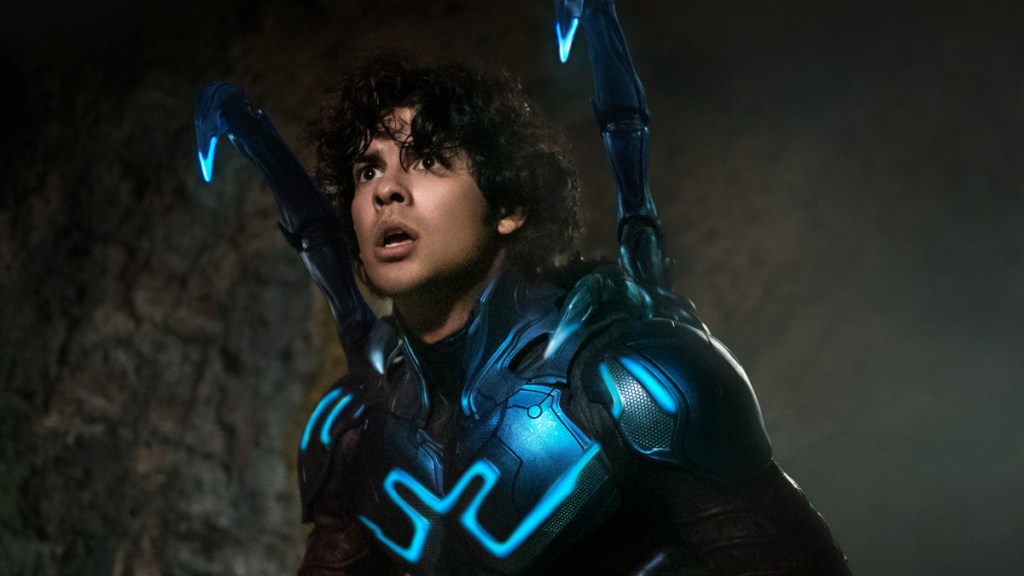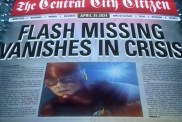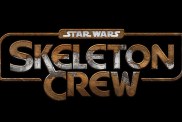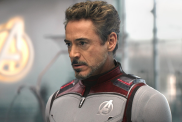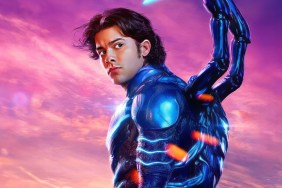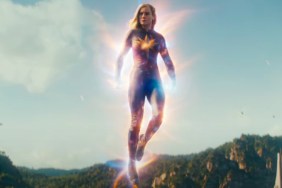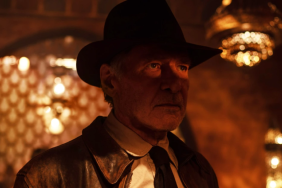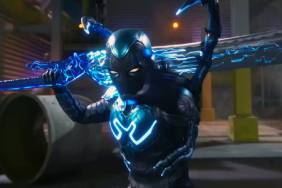One wonders how fans who avoided Blue Beetle in theaters for the silliest of reasons will feel now. Thanks to Marvel Studios training us to think only in terms of future tie-ins and sequels, a common sentiment arose that Blue Beetle would be skippable because it didn’t “count,” showing up before James Gunn resets the cinematic universe table. Now that Gunn has affirmed that, in fact, Xolo Mariduena‘s Jaime Reyes is indeed part of his new DC, perhaps the movie will get the second chance it deserves.
Single Dip
In keeping with recent Warner Bros. home release trends, the 4K disc does not come with a Blu-ray copy, though it does include a digital code. The plus side is that the extras, such as they are, can be found on the 4K disc. Typically for both WB and DC (in live-action, at least), there is no commentary track, a trend only David F. Sandberg routinely bucks.
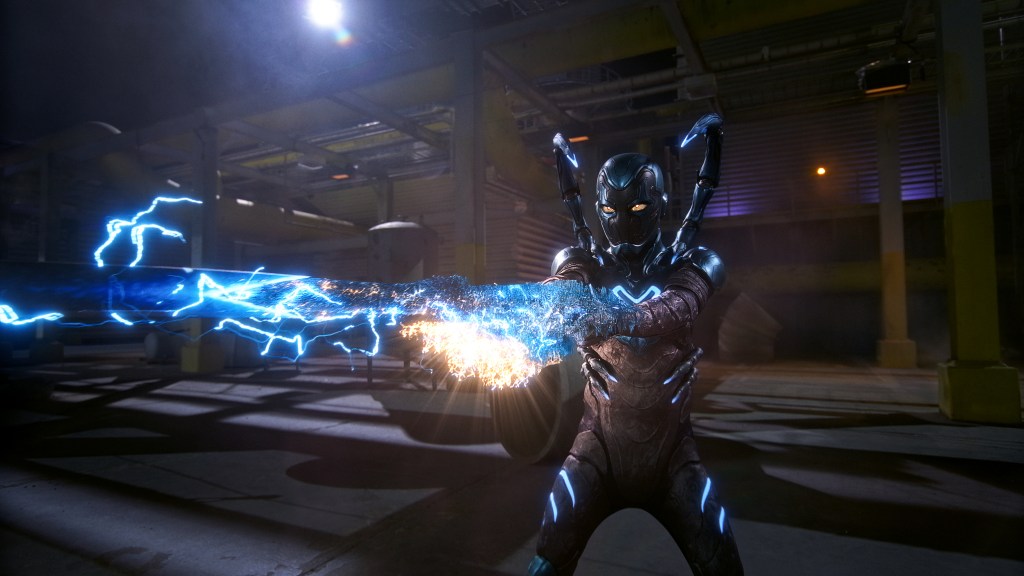
The extras include four making-of featurettes, from initial costume test to wrap; two sequences where Mariduena breaks down the action (and in a pointless gimmick, pretends he’s talking to the scarab); and a spotlight on Adriana Barraza’s Nana. Director Angel Manuel Soto (who looks not unlike villain Carapax!) and writer Gareth Dunnet-Alcocer get to talk quite a bit, and may break some fans’ hearts with the reveal that they definitely considered DC aliens The Reach to be behind the Scarab, presumably to be revealed in a potential sequel.
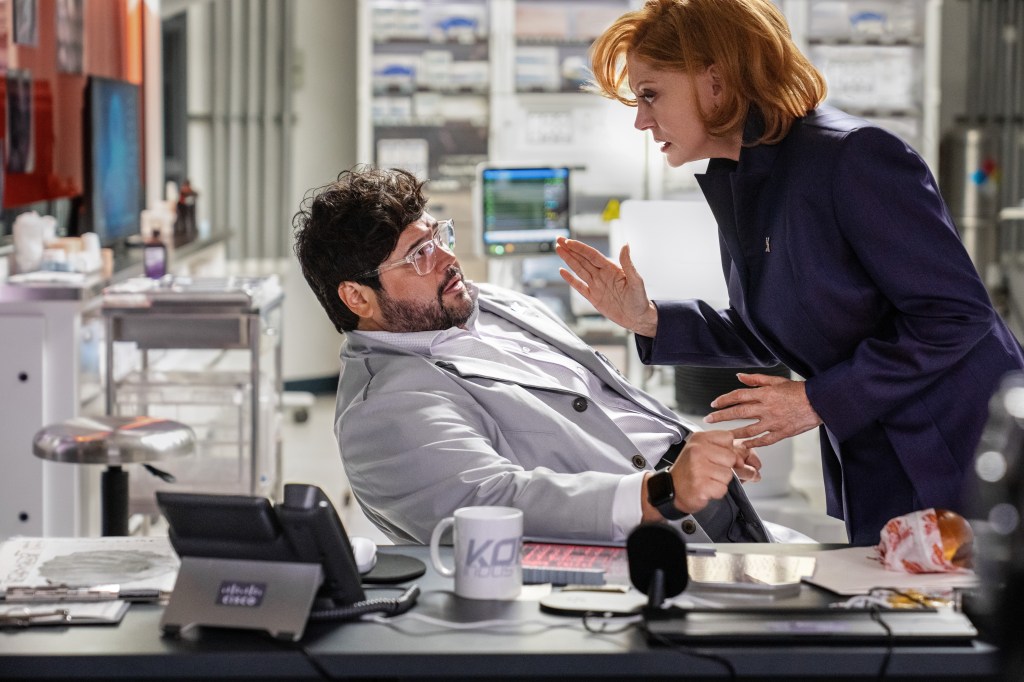
Perhaps more revealing, if you get all the movie’s references, is Dunnet-Alcocer’s comments about how he thought Ted Kord Blue Beetle, a flamboyant billionaire, was a hero for the Reagan era, with Jaime Reyes a hero for now. Warner Bros. probably wouldn’t want the proportion of the population who remembers Ronald Reagan with any fondness to be put off the film, but there’s a hefty amount of critique in it. Down to actually including soundbites of the president over scenes of Central American violence.
Contra Diction
For those who weren’t around back then, which presumably describes a hefty chunk of the intended audience, Central and South America were viewed by the Reagan administration as key proxies in the Cold War against the Soviet Union. In particular, and in broad strokes, the left-wing Nicaraguan Sandinistas, who overthrew a US-backed dictatorship, were in turn opposed by the Reagan-backed Contras, many of whom trained at the DOD-funded School of the Americas — which Blue Beetle movie villain Carapax (Raoul Max Trujillo) is pointedly noted as an alumnus of.
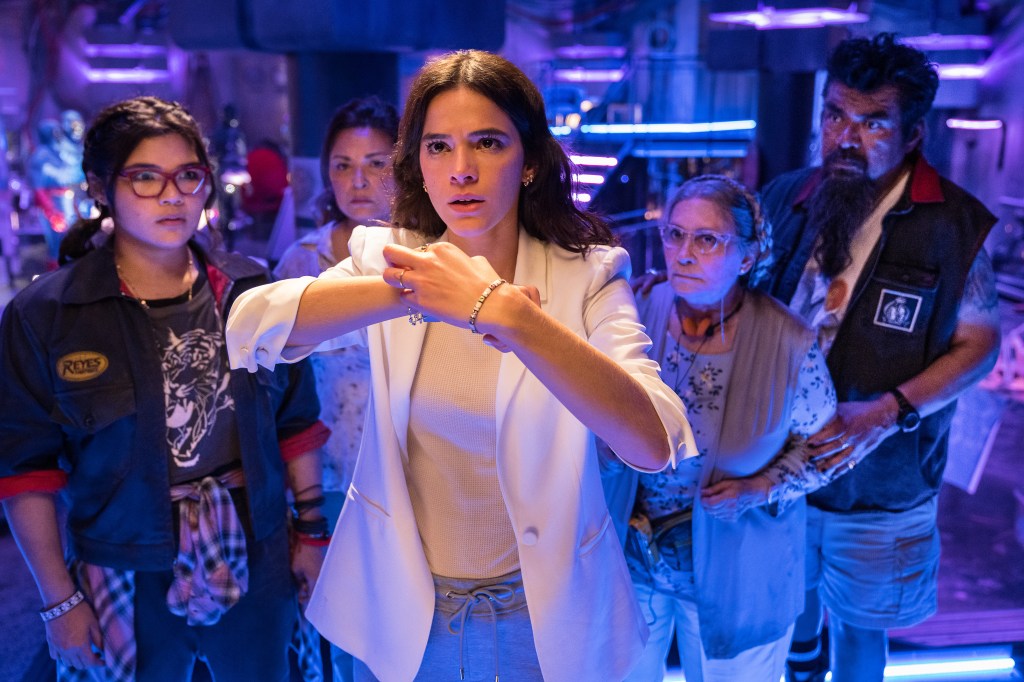
Meanwhile, Ted Kord apparently indulged in the excesses of the ’80s until he disappeared, leaving his sister to inherit a primary legacy of the Reagan administration, namely massive corporate deregulation and tax breaks. Jaime’s Nana, meanwhile, is implicitly a former Communist-allied revolutionary, which at the time could have put her anywhere on the spectrum from true Marxist believer to simply opposing a nominally US-allied tyrant.
That’s a pretty hefty subtext for a DC superhero movie, especially one founded in Zack Snyder’s vision of superheroes as Frank Miller-style violent cops with powers. But it’s also the strong cultural point of view one might hope a Latin-American director would bring to the table. For Soto, it was important to bring in Brazilian and Indigenous characters as well, hence the casting of Jenny Kord (Bruna Marquezine) and Carapax.
Capture the Castle
In the end, the movie comes out on the side of a more compassionate capitalism, which the movie has already shown is easily corruptible once the wrong CEO comes along. And even though Jaime makes a huge deal about not killing, his family doesn’t, and at one point casually impale a faceless villain with Ted Kord’s flying bug. Violence and killing isn’t necessarily denounced overall — just by the main character. Real life is messy like that, and power corrupts. Would a sequel have gone there? It’s quite possible, given the starting point. Kord Industries vs. Lexcorp is a plot that’d be fun to see down the line. In fictional Palmera City (filmed in Atlanta and Puerto Rico), their skyscrapers do stand close by.
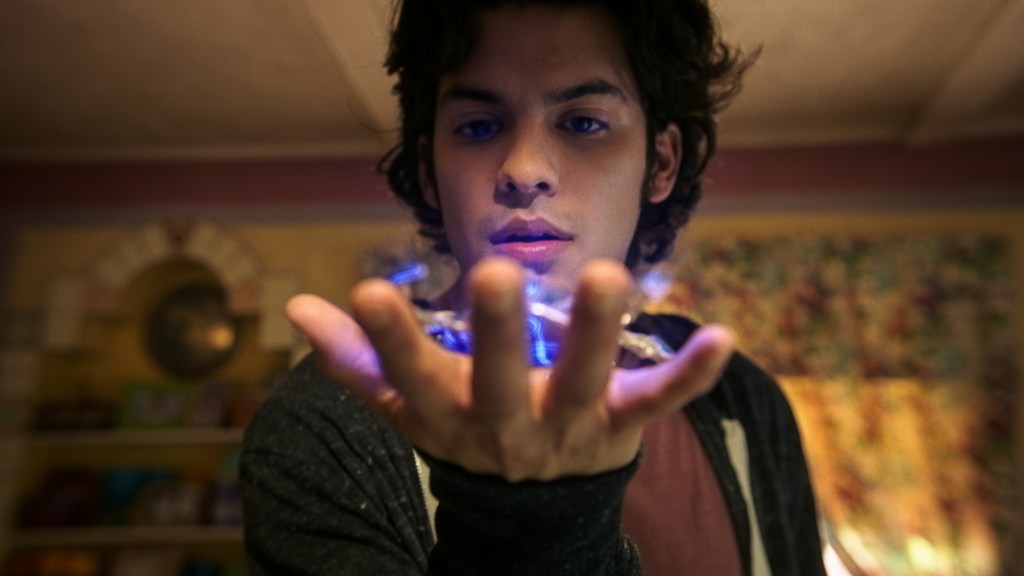
Bobby Krlic’s synth-based hero theme for Blue Beetle is indisputably the most awesome ’80s throwback, though. Having all the score be like that would make it even better.
The 4K visuals aren’t especially revelatory — the movie looks exactly as it did in theaters; no better, no worse. Aside, perhaps, form the obvious greenscreening in the afterlife sequence. For the most part, though, the blue/purple/yellow color scheme of the lighting didn’t have much to hide to begin with. They remain clean, with no bleed, and in some heavily red-lit scenes towards the end, that’s all to the good.
Young Blood
Blue Beetle overall remains refreshingly different, with its smaller, more personal stakes of an immigrant family losing everything versus the arms manufacturer who cavalierly endangers them. In the MCU circa 2008, the Reyes family could have been among Tony Stark’s casualties. Jaime’s youthful optimism stands as an inspirational contrast to so many jaded icons, he’ll be fun to see interacting with the rest of the new DC cinematic universe, if indeed that ever happens.
And if it doesn’t…fine! Enjoying individual superhero movies on their own terms is fun. Try it.
Overall grade, movie and extras: 3/5
Blue Beetle arrives on DVD and 4K UHD on October 31.
